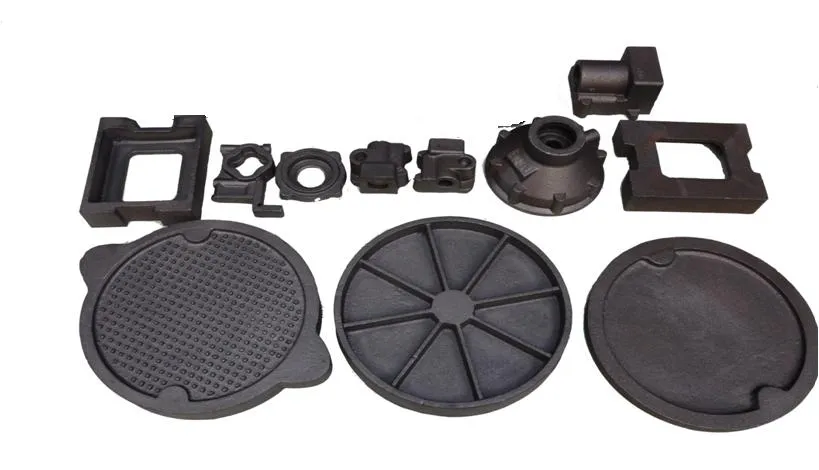Mobile:+86-311-808-126-83
Email:info@ydcastings.com
Aluminum Alloy Die Casting Techniques and Applications for Enhanced Manufacturing Efficiency
Understanding Aluminum Alloy Die Casting
Aluminum alloy die casting is a manufacturing process that involves pouring molten aluminum into a mold to create complex and precise parts. This technique is widely utilized across various industries, including automotive, aerospace, electronics, and consumer goods, due to its efficiency, versatility, and ability to produce lightweight yet durable components.
The Process of Die Casting
The die casting process typically involves several steps. First, the aluminum alloy is melted in a furnace, reaching temperatures of around 1200°F (649°C). Once the aluminum is in a molten state, it is injected into a steel mold (die) under high pressure using advanced injection machinery. The pressure can reach up to 4,500 psi, ensuring that the molten aluminum fills every cavity of the mold, capturing fine details and surface finishes.
After sufficient cooling time, the mold is opened, and the newly formed aluminum part is ejected. The die can be reused multiple times, making die casting a highly efficient method for mass production. Some common types of aluminum alloys used in die casting include Aluminum 380, 360, and 413, each offering different properties such as strength, corrosion resistance, and machinability.
Advantages of Aluminum Alloy Die Casting
1. Lightweight and Strong One of the most significant advantages of aluminum alloys is their excellent strength-to-weight ratio. Products made from aluminum die casting are lighter than those made from traditional materials, which contributes to fuel efficiency in vehicles and reduces overall operational costs.
2. Complex Geometries The die casting process can produce intricate designs and thin-walled sections that would be challenging to achieve with other manufacturing methods. This capability allows engineers to push the boundaries of design, creating components that optimize performance and aesthetics.
aluminum alloy die casting

3. Dimensional Accuracy Die casting provides high-dimensional accuracy and tight tolerances, which are essential for parts that require a precise fit. This accuracy minimizes the need for additional machining or finishing processes, further enhancing manufacturing efficiency.
4. Surface Finish The process can also achieve a superior surface finish, reducing the necessity for post-casting treatments and providing aesthetically pleasing results. This is particularly beneficial in industries where appearance is critical, such as consumer electronics.
5. Environmental Benefits Aluminum is 100% recyclable without losing its properties, making aluminum die casting an environmentally friendly option. The recycling process saves energy and reduces waste, aligning with modern sustainability goals.
Applications of Aluminum Alloy Die Casting
Aluminum alloy die casting has found applications in numerous sectors. In the automotive industry, it is used to produce engine blocks, transmission cases, and structural components, all of which benefit from the lightweight nature and strength of aluminum. In aerospace, aluminum parts are crucial for aircraft frames, landing gear, and various structural supports.
Furthermore, in the electronics field, aluminum die castings are common in heat sinks, housings, and enclosures, where thermal management is vital. Consumer products such as housings for power tools and appliances also frequently utilize aluminum die casting due to the aesthetic and functional advantages.
Conclusion
Aluminum alloy die casting is a crucial manufacturing process that combines efficiency, precision, and sustainability. As industries continue to innovate and seek cost-effective solutions, the demand for die-cast aluminum components will likely grow. By understanding the benefits and capabilities of this process, manufacturers can leverage aluminum alloy die casting to enhance their product offerings and meet the ever-evolving market needs.
-
Why Should You Invest in Superior Pump Castings for Your Equipment?NewsJun.09,2025
-
Unlock Performance Potential with Stainless Impellers and Aluminum End CapsNewsJun.09,2025
-
Revolutionize Your Machinery with Superior Cast Iron and Aluminum ComponentsNewsJun.09,2025
-
Revolutionize Fluid Dynamics with Premium Pump ComponentsNewsJun.09,2025
-
Optimizing Industrial Systems with Essential Valve ComponentsNewsJun.09,2025
-
Elevate Grid Efficiency with High-Precision Power CastingsNewsJun.09,2025











